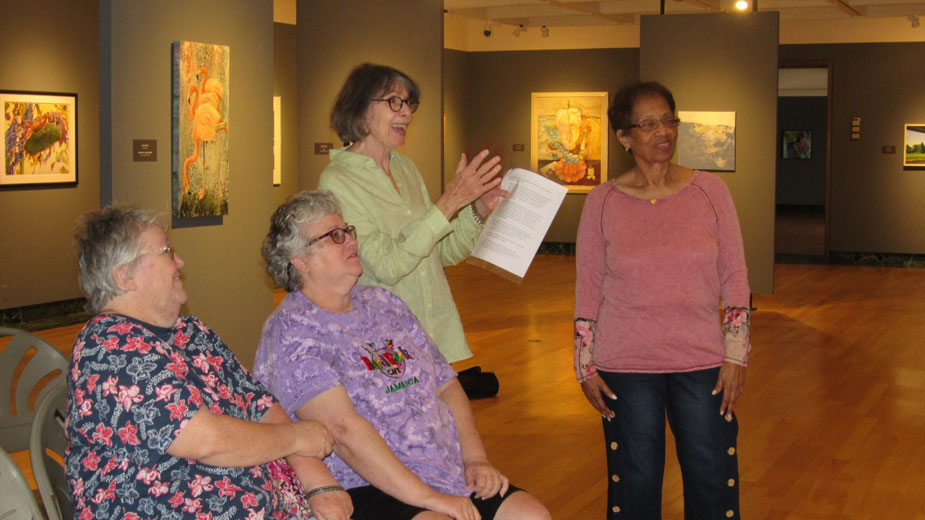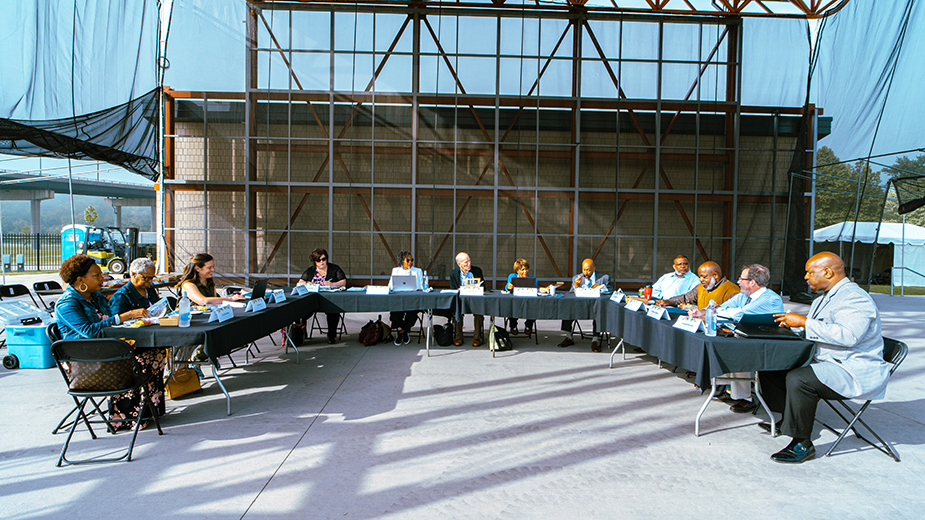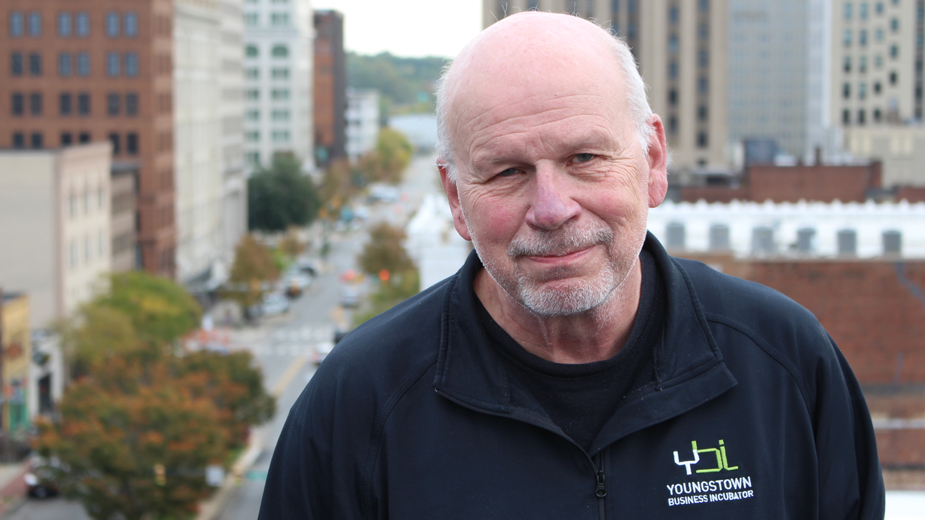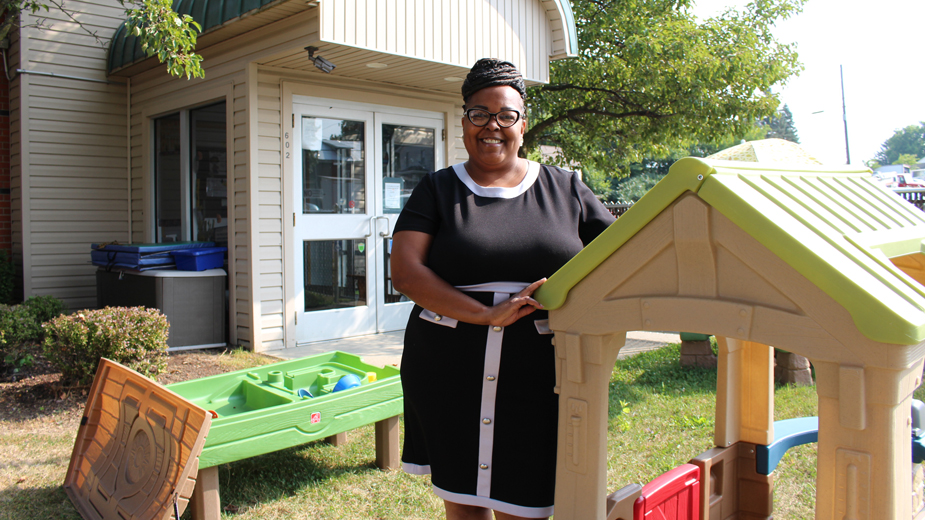Butler’s Docents Serve as ‘Face of the Museum’
YOUNGSTOWN, Ohio — From school children to senior citizens to babies in strollers, volunteer docents serve the mission of The Butler Institute of American Art by bringing art to regional residents who otherwise don’t often get to the museum.
That means a great deal to Hannah Moses, who has been a docent since 2002.
Moses retired seven years ago from her position as investment center librarian with the Public Library of Youngstown and Mahoning County. Serving as a docent is something she wanted to do in retirement, she says, because it allows her to learn about art and pass that knowledge to others.
“For a considerable period of my life, I did not grow up in a community that had easy access to museums,” Moses says. “But I always delighted in visiting Pittsburgh with my family and on school trips and visiting the museums there. So, it became an interest very young.”
Moses works with the programs for children as well as the Senior Art & Learn, which started about 2 1/2 years ago, she says.
Whether it’s kids or adults, she ensures they all have an opportunity to discuss the art and their own interpretation of it, she says.
“I’ve always felt that the best tours are the ones where I speak least,” Moses says. “I try to evoke, whether it’s a tour of children or adults, their views of what they’re seeing and doing it in a warm, inviting atmosphere so that those who are on the tour feel comfortable looking at and talking about art.”
During a Senior Art & Learn tour, Moses and fellow docent JoAnn Blunt discussed four works of art with about 15 senior citizens. Blunt joined the docent program in 2012 after graduating from its training program a year earlier.
“You learn a lot by being a docent,” Blunt says. “And then you’re able to teach others.”
As a former nursing-home administrator, Blunt has been around senior citizens her entire life. So, when the Senior Art & Learn program started, she jumped at the opportunity to be a part of it, she says.
Blunt was the second-generation owner and operator of the former Danridge’s Burgundi Manor, the first nursing home for black people in Youngstown, founded by her mother, Ruth Danridge.
As director of Danridge, Blunt organized programs for the residents to learn about different cultures and would welcome guest speakers and organize trips, she says.
The Butler wasn’t one of the destinations, she says, but as a docent, Blunt has reached out to area nursing homes to set up programs with the museum.
One new program is Museum Without Walls, in which docents go to the nursing and assisted living centers es to discuss art with the residents.
They currently work with Easter Seals of Mahoning, Trumbull and Columbiana counties, as well as the Blackburn Home in Poland.
“A few years before that, we had gone to four or five different nursing homes and assisted livings where we would do Butler Bingo,” she says. “We would take slides with us and play bingo with [the residents].”
Senior Art & Learn is important because senior citizens don’t always have an opportunity to be social, Blunt continues.
“Sometimes your friends are sick or they’ve already passed away,” she says. “This way, they can come out; they can be a part of it. They get a chance to come out and meet with each other and talk.”
Docents must be trained before they can give tours and training sessions are held once every two years. Classes are held twice weekly from 9 a.m. to noon, says Anne Gardner, a docent who works primarily with the school children tours.
During the sessions, docents tour the museum and are educated on what to look for in works of art, Gardner says.
“There was a lot involved. We learned about color and lines, what to look for, how to appreciate a painting,” she says. “So that we could convey that to children, adults, whomever we tour.”
The docent program has about 70 volunteers, says Joyce Mistovich, education director at The Butler. In addition to the initial training, the museum provides opportunities for continuing education, which is central to the program, Mistovich says.
Many of the docents were in attendance for the July 10 lecture by Barbara Haskell, curator for the Whitney Museum of American Art in New York – the first lecture in The Butler’s “On America” series.
Although some of the docents haven’t been to the Whitney Museum, listening to speakers from other museums and “other art-educated walks of life” gives them the tools they need to better serve the community, she says.
“My job would not be as amazing as it is if I did not work with these incredible docents,” Mistovich says. “They are the face of the museum. The Butler would not function, quite honestly, in the capacity that we do if it was not for the docents.”
While the docents have their special interests, most participate in all of the programs, including Stroller Art and Young Friends Adventure. (See Story Page 16).
Tours with kids are “much different” from the ones with adults, Moses comments. She mostly leads tours with kids because she enjoys hearing them express their views about art, she says.
“They are so forthcoming and that’s the delight of it,” Moses says.
Gardner agrees. After retiring as a nurse in 2011, Gardner joined the docent program in 2014.
While leading a tour of third-graders, Gardner recalls comments from a particular student as they viewed the Astrocyte Garden installment.
As does Gardner, the artist had a background in science and combined science with art to represent the astrocyte, which is a cell in the brain. The installation featured pieces of hanging lace set to ethereal music.
When Gardner asked one of the girls what she thought of the art, the student said it was “majestically creepy,” she recalls with a laugh.
“How can you top that? It was the best,” Gardner says. “Children knock me out. They are so funny.”
Schools needn’t organize trips to experience The Butler. The docents take the show on the road with the Good Neighbor Program, in which they bring art presentations into the classroom.
The program covers school districts in Mahoning, Trumbull and Columbiana counties, she says.
Involving kids with art is important because it connects them to nature and gives them someplace to go where they can relax, Gardner says. Most important, it reinforces the notion that their opinions matters.
“I think it’s important for children to appreciate art. It gives them a way to understand the world,” Gardner says. “It backs them up that their opinion is good.”
The docents agree that being a part of the program is good for them as well because they are part of a community that supports each other.
“You find kindred spirits in the program, which is delightful,” Moses says.
“I think we all feel we are furthering the mission of this incredible jewel in Youngstown.”
Pictured: Docents JoAnn Blunt (right) and Hannah Moses discuss a painting with two tour attendees during a Senior Art & Learn tour. Before they conduct tours, docent volunteers are trained on what to look for in a work of art.
More Butler 100th Anniversary coverage
- Honoring 100 Years of The Butler (video)
- 3 Minutes With Dr. Louis Zona, Executive Director, Butler Institute of American Art (video)
- Framing History Is Butler’s Art
- Learning Is Lifelong at The Butler Institute of Art
- Conservation and Archiving Saves Butler’s Treasures
- Business at The Butler Is Its Own Art
- The Butler Paints a Paper Trail to Display Exhibits
Copyright 2024 The Business Journal, Youngstown, Ohio.



